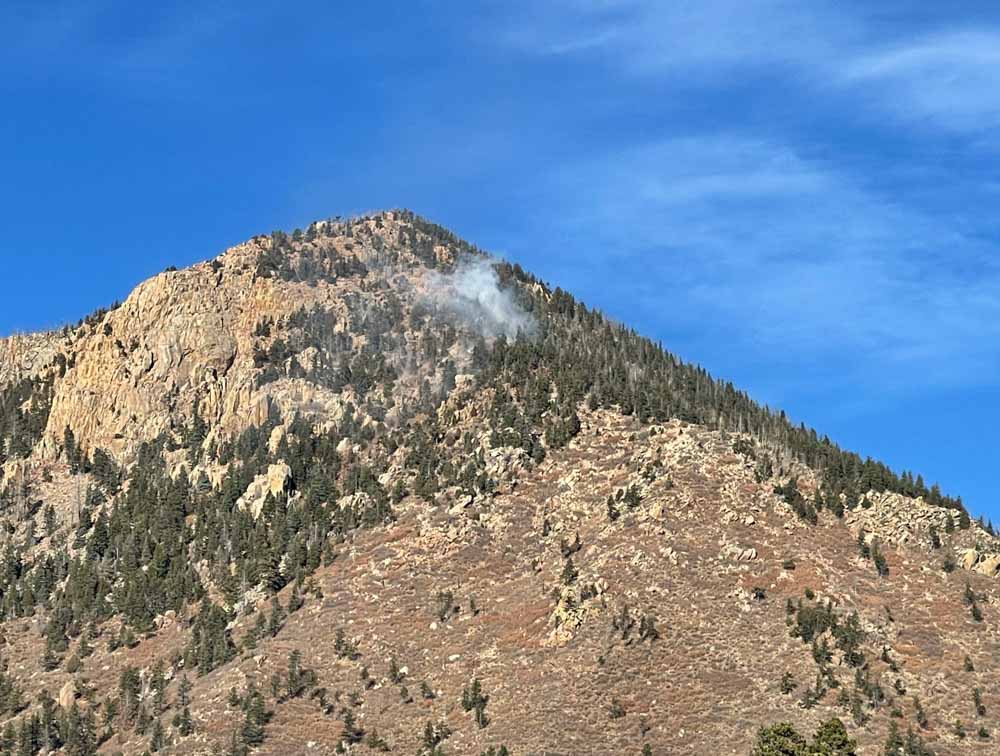
The last entry on the Pike & San Isabel National Forests blog was on October 13, about a 13-acre fire northeast of Gardner, Colorado — until yesterday, Dec. 22, when a fire was reported at 5:22 a.m. about two miles southwest of the Air Force Academy northwest of Colorado Springs. It was near the top of Blodgett Peak, 9,400 feet above sea level.
A person would think that three days before Christmas there would be snow in Colorado at that elevation, but none was visible in photos posted by the Colorado Springs Fire Department. And not only was there no snow, but two large air tankers were on duty and assisted firefighters.
The fire is 0.9 mile inside the National Forest boundary. It was mapped by the state’s multi-mission aircraft Wednesday at 0.3 acre.

The area was under a Red Flag Warning Wednesday for predicted winds gusting over 40 mph and very low humidity. Firefighters did not reach the fire Wednesday due to concerns about the wind. The area was patrolled by personnel from the Colorado Springs Fire Department that night, and the incident was turned over at 9 a.m. Thursday to the US Forest Service with a Type 2 hand crew and a Type 3 helicopter.
Ten years ago a slow moving fire on Colorado’s front range, especially in December, would not always have been aggressively attacked. But gradually since the 2012 Waldo Canyon Fire destroyed 344 homes, killed two people, and burned 18,000 acres on the west side of Colorado Springs, federal and local fire agencies have been improving their initial attack strategies.
#BlodgettPeakFire Air tanker drops on the fire successful this afternoon. CSFD brush patrols will be in the area overnight. Active flames may be visible throughout the night, please don’t call 911, we have crews on scene monitoring. Please avoid the area. pic.twitter.com/6swXr0CqxG
— CSFD PIO (@CSFDPIO) December 23, 2021
